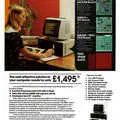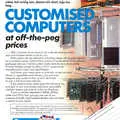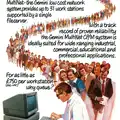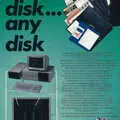
Gemini Micro Advert - March 1986
From Personal Computer World
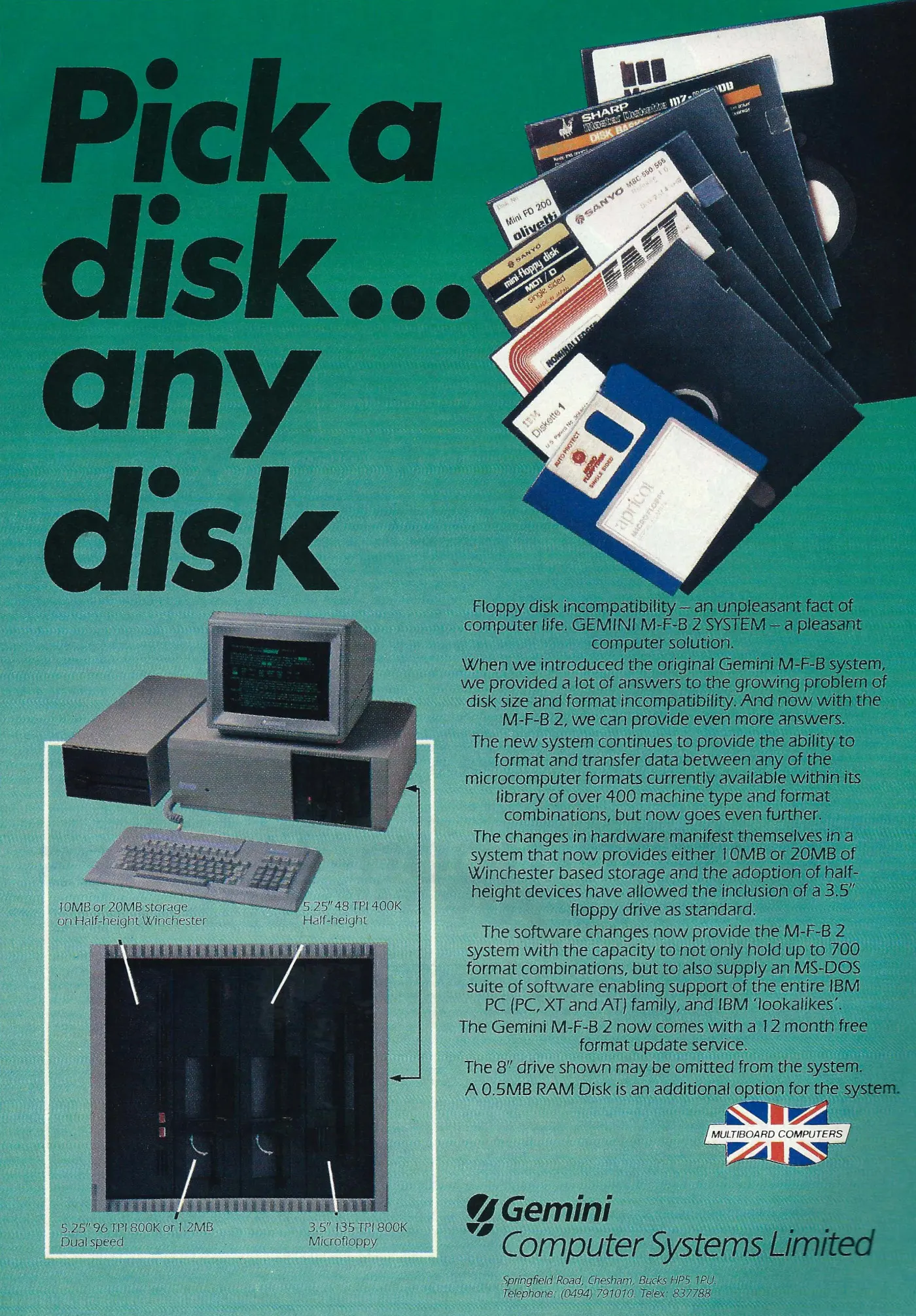
Gemini: Pick a disk... any disk
Gemini had been founded by John Marshall shortly after the receivers had been sent in to his former company Nascom - builder of what was once Britain's most popular kit computer, the Nascom 1. Nascom - which spent the following two years in receivership - ended up being bought out by Lucas Logic.
The new company kept with the previous Nas-bus format for plug-in cards, but renamed it the 80-Bus as it was no longer allowed to produce anything related to the Nascom name.
However, Gemini's micros differed from the earlier Nascom machines by only supporting CP/M[1].
It released a few fully-fledged microcomputer systems - the Galaxy 1, 2 and 3, which were all Z80 machines running CP/M, with the Galaxy 3 also coming with a 5.4MB Winchester hard disk.
However in this hard-to-read advert it's also offering the oddly-named Gemini M-F-B-2 disk unit - for Multi Format BIOS - which was pitched as a way of converting between up to 700 different combinations of manufacture and disk formats.
This situation came about because most micros of the day weren't compatible with each other.
The M-F-B-2 hosted a user-defined combination of 10MB or 20MB hard disk, a 500K RAM disk, 3½" floppy, 5¼" floppy and even 8" floppy.
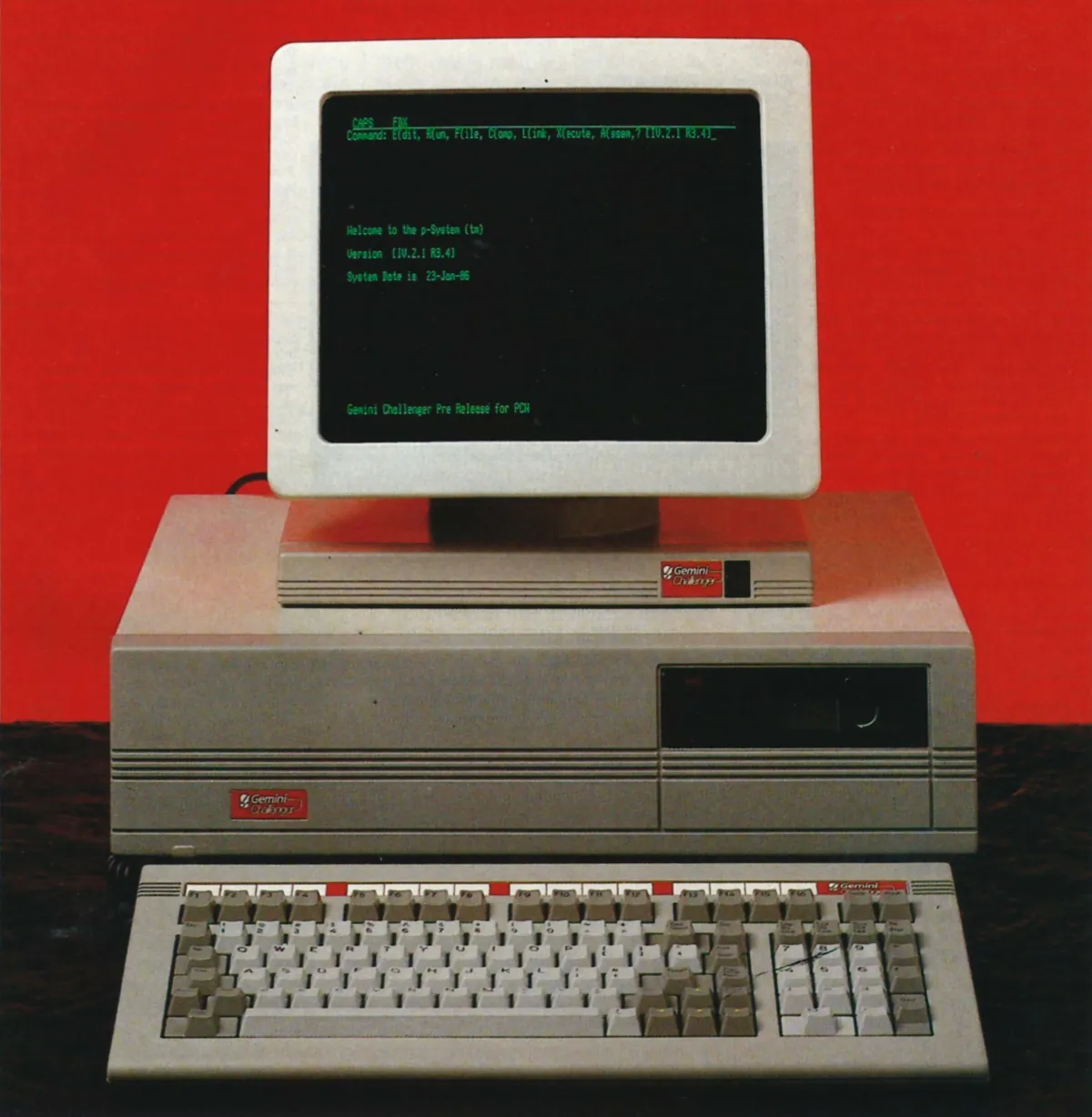
Gemini's Challenger development/business system, as featured in Personal Computer World's benchtest of the machine in the March 1986 edition. The Challenger is just the big beige box - the monitor and keyboard both belong to a rebranded Wyse-50 terminal, which was the actual way of using a Challenger.
Although this advert doesn't mention any Gemini micros, the company was still producing them and had only recently launched its Challenger machine - a multi-user system based around the Motorola 68000.
The company had needed a way of breaking away from the Z80, a processor which dates from 1976 and which had no upgrade path to the world of 16 and 32 bits.
So it decided to switch to the Motorola 68000 line as this offered a whole range of processors from the 8-bit 68008 - as used in Clive Sinclair's QL - to 32-bit 68020, the processor used in some of Commodore's later Amiga models.
In doing so, it also had to create a replacement for its previous 80-Bus card/socket architecture, which was essentially a re-branded NasBus - the bus used in the popular early board micro the Nascom 1 and which was apparently considered as the UK's answer to the popular S-100 bus[2], which had debuted in 1975's Altair 8800.
Gemini had initially considered using Motorola's own VME - or VERSAModule Eurocard - bus, which was in use on Torch's Triple X Unix workstation, but considered it too expensive to develop products for.
Instead it decided to create its own much-cheaper 68k bus, which could support either 16-bit CPUs on a 96-way DIN connector, or a full 32-bit using a supplemental 48-way DIN connector.
In order to provide a development system for anyone interested in developing for the new 68k Bus, the Challenger was created.
However, it could also run as a regular multi-user system, and even offered no fewer than four different operating systems: Multi-user Business Operating System (MBOS), Mirage, p-System - an OS based on the concept of the "Perfect Computer" and popular at the time in the education sector - and CP/M 68k.
Unusually, several of these operating systems could be present on the hard disk at the same time, and were individually selectable at boot time.
Peter Bright concluded of the Challenger that it made sense as a development tool for OEMs, but that it would stand or fall based upon the success of the 68k bus - a bus that at the time no-one else was using. He continued:
"As a business micro, the Challenger fares quite well. It is nicely made, and the casings are of good quality, and the electronics are reliable. The main problem with the Challenger as a business machine is its non-mainstream nature. There is no way that a machine based on the Motorola 68000 can run the library of MS-DOS applications built up by the IBM PC. But, if you can find the right applications software, the Challenger could prove to be a worthy addition to the office"[3].
The Challenger range never appeared to take off, with Gemini itself disappearing in around 1991[4].
The company did however launch a Transputer-based Gemini Workstation card in 1988, and the following year it submitted a design for a "supercomputer" machine with 384 T800 Transputers and 1.6 gigabytes of RAM[5].
Date created: 05 February 2024
Last updated: 26 July 2025
Hint: use left and right cursor keys to navigate between adverts.
Sources
Text and otherwise-uncredited photos © nosher.net 2025. Dollar/GBP conversions, where used, assume $1.50 to £1. "Now" prices are calculated dynamically using average RPI per year.

